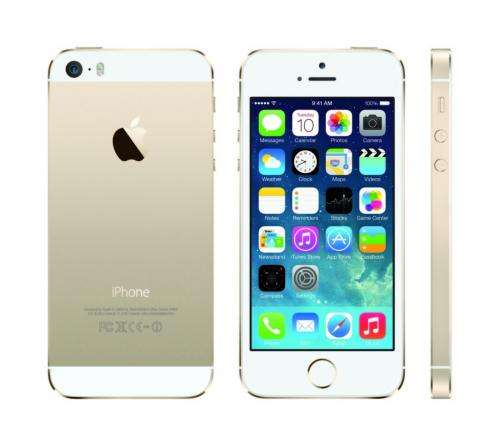Apple's iPhone 5C: Better late than never—or too little, too late?

With the rumour mill working overtime over the past couple of months, Apple CEO Tim Cook launched the latest iPhone models yesterday: the iPhone 5S and a low-cost version, the iPhone 5C.
This foray into a less expensive version of a product isn't new for the company – the iPod portable music player, launched in 2001, was followed by the cheaper (but smaller) iPod Mini three years later (which was subsequently replaced by the Nano in 2005).
It's taken Apple six years to come up with a mid-range iPhone – but when you think about it, six years is quite a long time in technology.
Less than a generation ago, the idea of having a telephone, an internet browser and your entire music collection all in one stylish little package that fits easily in your pocket seemed a Utopian pipedream.
For some years now, smartphones have offered people convenient but expensive mobile internet access.
In the developing world though, the high cost of mobile computing has created a digital divide that has so far excluded millions – if not billions – of people from enjoying the same benefits.
That situation is about to change.
In the next few years, people in the developing world will, for a fraction of the cost, have the same mobile internet access that most of us in the developed world take for granted.
From an equity of access point of view, this is very good news.
A sign of the times
According to Cook's keynote speech presented at Apple headquarters in Cupertino, California, the iPhone 5C will have a low-cost polycarbonate shell instead of the metal frame used in earlier iPhones.
Most strikingly, consumers now have a choice of five bright colours: yellow, blue, green, rose and white.

On the inside, the 5C will have almost the same components and fingerprint scanning technology as the more expensive iPhone 5S (the successor to the iPhone 5).
Expected to sell for as little as US$99 the 5C will compete with other low-cost smartphones from Shenzhen-based Huawei (the Huawei Sonic smartphone sold in Australia for A$188) and other manufacturers.
These affordable smartphones and iPhones are aimed at the enormous domestic Chinese market. And beyond China, other developing markets are irresistibly beckoning.
To give you an idea of the size of the Chinese market for smartphones, Reuters reports that in March 2013, there were a total of 1.15 billion mobile phone subscribers in China (a 1.2% increase in one month).
Of these, 280 million were already 3G subscribers, able to make use of smartphone technology.
Contrast this figure with a US total of 254 million 3G and non-3G subscribers, and it's no surprise that China is now the world's biggest smartphone market.
Speculation is rife that Apple will try to seal a deal with China Mobile, similar to the one they had with carrier AT&T in the US.
If the deal goes through, Apple will have a guaranteed market for large volumes of the iPhone 5C and China Mobile will have an edge in the highly competitive 3G/4G market in China.
Population vs mobile phones
Globally, the scale of mobile phone usage is enormous. In September 2013, the US Census Bureau reports that the total human population of the world is 7.1 billion.
It is estimated that there are around 6.8 billion mobile phones in the world. It is not known exactly how many of these are smartphones, though it is likely to be substantially less than half.
Little wonder then that Apple has broken with its own long-standing practice of charging top-dollar for its products.
We are likely to soon see comparable offerings from Samsung, LG, HTC, Sony, Google and ASUS, all seeking a share of this burgeoning global market.
The real benefit of the smartphone from a social point of view is its ability to lessen the economic inequality that currently excludes billions of people in the world from access to information and services.
Critics say that smartphone are not a solution to the digital divide because they are primarily "consumption" devices; fine for downloading content and checking Facebook, but no good for "real" work – like word processing or gaming – traditionally completed on a bigger, faster laptop or computer.
There may be some truth to this, but one look at the technical specifications of the latest smartphone, such as the iPhone 5S released today and you see a device of comparable power to a PC.
With user interfaces improving, the ability of smartphone to perform "real" work is improving with every new release.
This is not to suggest that mobile computing is the saviour of the world: rather, it is a big step in the right direction.
Source: The Conversation
This story is published courtesy of The Conversation (under Creative Commons-Attribution/No derivatives).
![]()



















